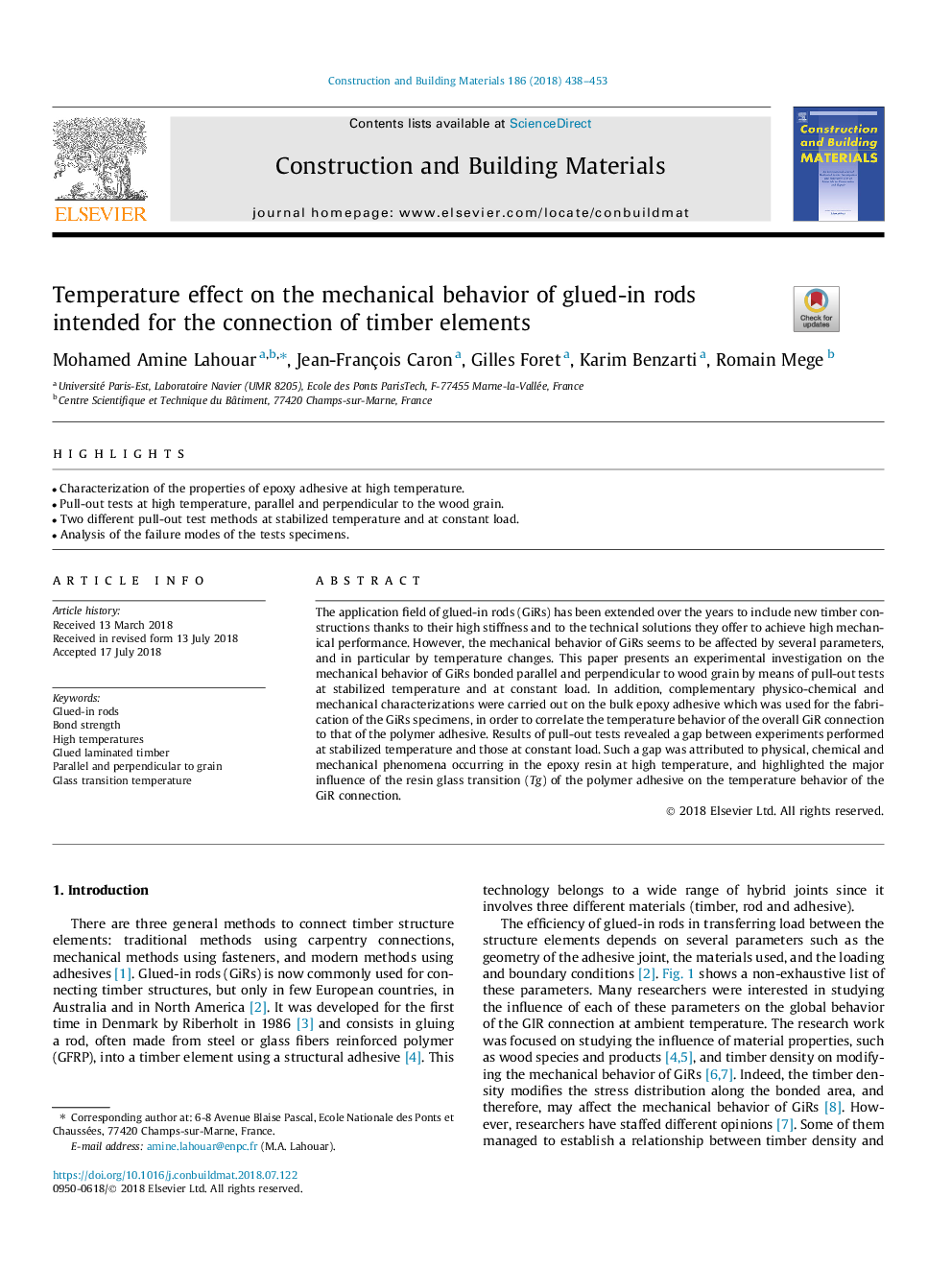| Article ID | Journal | Published Year | Pages | File Type |
|---|---|---|---|---|
| 6711655 | Construction and Building Materials | 2018 | 16 Pages |
Abstract
The application field of glued-in rods (GiRs) has been extended over the years to include new timber constructions thanks to their high stiffness and to the technical solutions they offer to achieve high mechanical performance. However, the mechanical behavior of GiRs seems to be affected by several parameters, and in particular by temperature changes. This paper presents an experimental investigation on the mechanical behavior of GiRs bonded parallel and perpendicular to wood grain by means of pull-out tests at stabilized temperature and at constant load. In addition, complementary physico-chemical and mechanical characterizations were carried out on the bulk epoxy adhesive which was used for the fabrication of the GiRs specimens, in order to correlate the temperature behavior of the overall GiR connection to that of the polymer adhesive. Results of pull-out tests revealed a gap between experiments performed at stabilized temperature and those at constant load. Such a gap was attributed to physical, chemical and mechanical phenomena occurring in the epoxy resin at high temperature, and highlighted the major influence of the resin glass transition (Tg) of the polymer adhesive on the temperature behavior of the GiR connection.
Keywords
Related Topics
Physical Sciences and Engineering
Engineering
Civil and Structural Engineering
Authors
Mohamed Amine Lahouar, Jean-François Caron, Gilles Foret, Karim Benzarti, Romain Mege,
